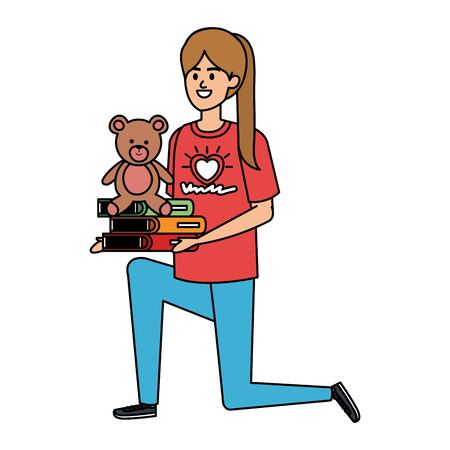Understanding Why Indian Infants Need Burping During Bottle Feeding
In India, new parents often worry when their little ones show signs of gas or colic during feeding times. Gas issues are common among Indian infants, especially those who are bottle-fed, due to a combination of factors such as the babys immature digestive system, feeding positions, and even the traditional diet followed by breastfeeding mothers. The process of bottle feeding can cause babies to swallow air along with milk, leading to trapped gas in the stomach. This trapped air causes discomfort, fussiness, and sometimes results in spit-ups or interrupted sleep.
Burping is a time-honoured practice recommended by paediatricians across India and plays a vital role in relieving this trapped air from your baby’s tummy. When you burp your baby at regular intervals during and after feeds, you help release the excess air, making digestion smoother and reducing the chances of colic or stomach pain. For Indian families, where joint family systems still exist in many homes, grandmothers often pass down traditional wisdom about different burping techniques that have been practiced for generations.
Understanding the importance of burping in our cultural context helps reduce unnecessary anxiety and empowers parents to handle feeding time with confidence. By ensuring proper burping during every bottle feed, Indian parents can make feeding experiences more comfortable for their babies and promote healthy growth and development.
2. Recognising Signs of Gas and Discomfort in Babies
Understanding when your baby is experiencing gas or discomfort during bottle feeding is crucial for Indian parents, as timely intervention can help reduce distress and promote healthy feeding habits. In many Indian households, family members often worry when a baby cries or seems irritable during or after feeds. However, not all crying means hunger; sometimes, it signals trapped gas. Recognising these signs early can help you take steps to burp your baby more effectively and improve their comfort.
Common Symptoms of Trapped Gas in Indian Infants
Indian infants may show several typical symptoms if they have trapped gas during bottle feeding. These signs are often noticed by mothers, grandmothers, and caregivers who are keenly observant of the child’s behaviour and routines. Here are some key indicators:
| Symptom | Description |
|---|---|
| Fussiness | The baby becomes restless or cranky, especially soon after feeding. |
| Bloating | The babys tummy feels firm or looks swollen, which is commonly felt while gently pressing the abdomen. |
| Crying | Persistent crying that does not stop with feeding or rocking, often escalating in the evenings (colic). |
| Pulling Legs Up | The infant may instinctively pull their legs toward the stomach to relieve discomfort. |
| Arching Back | Some babies arch their backs during or after feeds, signalling abdominal pain due to gas. |
When to Be Concerned?
If these symptoms are mild and resolve after burping or passing gas, they are usually not a cause for concern. However, if your baby continues to show signs of discomfort despite efforts to help them burp, or if there is excessive vomiting, poor weight gain, or refusal to feed—common worries among Indian parents—it is advisable to consult a paediatrician promptly.
Role of Cultural Practices in Symptom Recognition
In Indian culture, elders often use traditional methods like applying gentle tummy massages with warm oil or singing lullabies to soothe gassy babies. While these practices can provide comfort, combining them with proper burping techniques enhances effectiveness. By identifying these symptoms early and responding appropriately, you ensure that your little one remains comfortable and healthy during their growth stages.

3. Cultural Approaches to Burping in Indian Homes
Burping a baby is not just a physical act but also an important cultural practice in Indian households. Across India, families have developed their own traditional methods and beliefs about burping that are passed down through generations. Many Indian mothers and grandmothers recommend gently patting the baby’s back while holding them upright, either on the shoulder or seated on the lap, which is believed to help release trapped gas effectively. A popular method involves rocking the baby lightly while patting or rubbing the back in circular motions—this approach is thought to soothe the infant and aid digestion.
It is common for elders in Indian families to advise burping after every feeding session, especially when using a feeding bottle, as they believe this prevents colic and discomfort caused by “hawai phasna” (trapped air). Some regions use traditional home remedies such as giving a few drops of “ajwain water” (carom seed-infused water) or “hing paste” (asafoetida mixed with water applied around the navel) to further reduce gas issues—though these should be used only after consulting a pediatrician.
Family tips often emphasize patience and calmness during burping. Many caregivers suggest singing lullabies or chanting soothing mantras while burping, believing that this creates a peaceful environment for both mother and child. In joint families, it is not unusual for experienced elders to guide new parents through different burping positions and share tips that have worked for their own children. These practices highlight the value placed on intergenerational wisdom and community support in raising healthy Indian infants.
4. Step-by-Step Guide: How to Burp Your Baby During Bottle Feeding
Bottle feeding is common in many Indian families, and ensuring your baby is burped properly can significantly reduce discomfort caused by trapped gas. Here’s an easy-to-follow guide using positions and techniques that are popular and widely recommended across India. Remember, each baby is unique—choose the method that works best for your little one.
Popular Burping Positions in India
| Position | Description | Best For |
|---|---|---|
| Over-the-Shoulder | Hold your baby upright against your chest with their chin resting on your shoulder. Gently pat or rub their back. | Newborns & Infants who feel secure with body contact |
| Sitting Upright on Lap | Sit your baby on your lap, support their chest and head with one hand, while gently patting or rubbing their back with the other. | Babies with good neck control (usually 2 months+) |
| Lying Across Lap | Lay your baby tummy-down across your lap, supporting their head slightly higher than their body. Pat or rub their back gently. | Babies who need extra support or calming |
Step-by-Step Instructions
1. Over-the-Shoulder Position
- Place a clean cotton towel (gamcha) over your shoulder to catch any spit-up.
- Hold your baby upright against your shoulder so their chin rests comfortably.
- Support them with one hand and gently pat or rub the upper back in a circular motion with the other hand.
2. Sitting Upright on Lap Position
- Sit on a chair or bed with your feet flat on the ground.
- Sit your baby facing outward on your lap, supporting their chest and head using the palm of your hand under the chin (not throat).
- With the other hand, gently pat or rub the baby’s back. This position is especially helpful for babies who have started holding up their heads.
3. Lying Across Lap Position
- Place a towel across your lap to keep things tidy.
- Lay your baby face-down across your lap, making sure their head is higher than the rest of their body to avoid reflux.
- Gently pat or rub the babys back in a soothing rhythm until they burp.
Tips for Effective Burping During Bottle Feeding
- Try burping midway through feeding and again at the end to minimize gas build-up—especially important for formula-fed Indian infants who may swallow more air.
- If the baby doesn’t burp after a few minutes, change positions and try again.
- If you observe signs of discomfort like squirming or arching during feeds, pause and burp them before continuing.
Selecting a comfortable place, such as a traditional Indian charpai (cot) or cushioned chair, can make the process easier for both mother and child. Practicing these methods regularly helps keep infants happy and reduces gas-related issues common among Indian babies.
5. Tips to Reduce Gas Issues During Bottle Feeding
Dealing with gas issues in Indian infants can be challenging, but making some practical adjustments during bottle feeding can make a big difference. Here are some effective tips tailored for Indian families:
Choose the Right Bottle and Teat
Selecting bottles and teats designed to minimise air intake is crucial. In Indian markets, look for anti-colic bottles from trusted brands like Philips Avent, Pigeon, or Chicco. These bottles often have special venting systems to reduce the amount of air swallowed by your baby. Also, choose a teat (nipple) with an appropriate flow rate; slow-flow teats are ideal for newborns as they prevent gulping and reduce the risk of gas.
Pace the Feeds
Feeding your baby slowly can help prevent them from swallowing too much air. Pause every few minutes to let your baby rest and burp if needed. This also gives you a chance to observe your baby’s cues for fullness or discomfort, which is important in preventing overfeeding—a common cause of gassiness in Indian infants.
Keep Baby Calm During Feeding
Crying babies tend to swallow more air. To keep your baby calm, create a peaceful environment free from distractions and loud noises. Hold your baby comfortably and talk softly or sing a lullaby in your local language—whether it’s Hindi, Tamil, Telugu, or another—to soothe them during feeds. You may also consider traditional practices like gentle rocking or using a soft cloth (gamcha) for comfort.
Hold the Bottle at the Correct Angle
Ensure that the bottle is tilted so that the teat is always full of milk, not air. This helps prevent your baby from sucking in air bubbles, reducing gas formation. Practice this consistently whether you are at home in Mumbai or visiting relatives in rural Uttar Pradesh.
Avoid Overfeeding
Overfeeding can contribute to gas and discomfort. Follow your paediatrician’s recommendations for feed volumes based on your babys age and weight. Remember that every child is different—what works for one may not work for another.
Regularly Check for Bottle Wear and Tear
With frequent use and cleaning, bottles and teats can develop cracks where bacteria might collect, leading to additional digestive issues. Regularly inspect and replace these parts as needed, which is especially important in India’s warm climate where wear occurs faster.
By adopting these simple yet effective strategies during bottle feeding, Indian parents can significantly reduce gas-related troubles and ensure their little ones remain comfortable and happy after each meal.
6. When to Seek Help: Addressing Serious Gas Concerns
While most gas issues in Indian infants are common and can be managed at home with proper burping techniques and feeding practices, there are times when it is essential to consult a local paediatrician or healthcare provider. Understanding these situations helps parents act early and ensure the well-being of their baby.
Recognising Warning Signs
If your baby is experiencing excessive crying, especially if it lasts for more than three hours a day, more than three days a week, this may indicate colic—a frequent concern among Indian families. Apart from colic, parents should also watch for signs such as persistent vomiting, refusal to feed, poor weight gain, blood in stool, or severe abdominal distension. These symptoms could point towards underlying digestive issues that need medical evaluation.
Common Digestive Issues in Indian Infants
Indian babies may face specific digestive problems due to dietary habits and environmental factors. Lactose intolerance, cow’s milk protein allergy (especially if formula is being used), or sensitivity to certain foods introduced during weaning can all contribute to gas and discomfort. Additionally, recurrent loose motions or constipation along with excessive gas may require a thorough check-up by a paediatrician familiar with Indian infant health concerns.
When Home Remedies Are Not Enough
Traditional remedies such as giving gripe water or light tummy massages are popular across India; however, if these do not provide relief or if your baby’s discomfort worsens, professional advice is crucial. Do not rely solely on herbal mixtures or over-the-counter solutions without consulting a doctor, as some ingredients may not be suitable for infants.
The Role of the Local Healthcare Provider
Local paediatricians understand the cultural context and typical dietary patterns of Indian families. They can guide you on appropriate feeding methods, assess for allergies common in the region, and recommend safe interventions tailored to your babys needs. Early consultation ensures any serious conditions are addressed promptly, helping your child grow strong and healthy.
7. Frequently Asked Questions by Indian Parents
How often should I burp my baby during bottle feeding?
Indian parents commonly wonder about the right frequency for burping. It is generally advised to burp your baby every 2-3 ounces (60-90 ml) of milk or after every 5-10 minutes of feeding. This is especially important if you are using traditional feeding bottles or homemade nipples, as they may cause more air intake. If your baby seems uncomfortable or stops feeding suddenly, pause and try to burp them before continuing.
Are there any specific positions recommended for burping Indian infants?
Yes, holding the baby upright against your shoulder or seating them on your lap with gentle support to the chest and chin are both effective. In many Indian homes, family elders recommend gently patting or rubbing the babys back while reciting calming phrases or lullabies in local languages, which can help relax both mother and child.
What can I do if my baby doesn’t burp after feeding?
Sometimes babies do not burp even after several minutes. If this happens, try changing positions or giving a gentle massage on the back. Some Indian families use mild circular massages on the babys tummy (always be gentle) and offer a few drops of lukewarm water as per tradition—however, always consult your pediatrician before introducing anything new.
Is it normal for babies to have gas issues even after regular burping?
It is quite common in India for babies to experience some gas, especially due to dietary variations in breastfeeding mothers and traditional weaning foods. Ensure proper latching during bottle feeding and avoid overfeeding. If gas problems persist, consider reviewing your feeding routine and seek advice from a healthcare professional experienced with Indian infant care.
Should I follow any special feeding routines based on Indian customs?
While modern science suggests fixed intervals and cues-based feeding, many Indian families practice demand feeding and rely on traditional timings. Whichever method you choose, ensure your baby is fed in a calm environment with minimal distractions, following hygiene practices like washing hands and sterilizing bottles as commonly advocated in Indian public health initiatives.
When should I be concerned about my babys gas or discomfort?
If your baby is excessively fussy, refuses feeds, vomits frequently, has blood in stools, or shows signs of severe discomfort despite all efforts, consult a pediatrician promptly. These could be signs of underlying conditions requiring medical attention.
Final Tip:
Remember that each baby is unique. Combining evidence-based practices with supportive cultural traditions often provides the best results for Indian families navigating infant feeding and gas issues.


